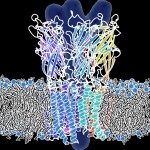Link to HAL – Click here
Link to DOI – 10.3390/v15061366
Viruses 2023, 15, 1366
The current SARS-CoV-2 pandemic highlights our fragility when we are exposed to emer- gent viruses either directly or through zoonotic diseases. Fortunately, our knowledge of the biology of those viruses is improving. In particular, we have more and more structural information on virions, i.e., the infective form of a virus that includes its genomic material and surrounding protective capsid, and on their gene products. It is important to have methods that enable the analyses of structural information on such large macromolecular systems. We review some of those methods in this paper. We focus on understanding the geometry of virions and viral structural proteins, their dynamics, and their energetics, with the ambition that this understanding can help design antiviral agents. We discuss those methods in light of the specificities of those structures, mainly that they are huge. We focus on three of our own methods based on the alpha shape theory for computing geometry, normal mode analyses to study dynamics, and modified Poisson–Boltzmann theories to study the organization of ions and co-solvent and solvent molecules around biomacromolecules. The corresponding software has computing times that are compatible with the use of regular desktop computers. We show examples of their applications on some outer shells and structural proteins of the West Nile Virus.
Keywords: virus structure; alpha shapes; normal modes; electrostatics

